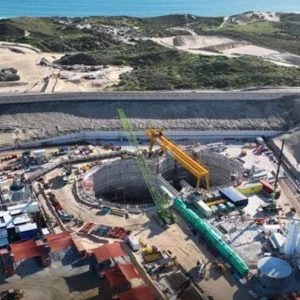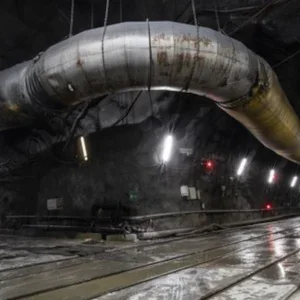Located just north of Peterborough, the project is part of the £1.2bn East Coast Upgrade, which aims to increase train capacity and facilitate faster journeys between London and Scotland. The ‘dive under’ will allow two new, tunnelled rail lines to pass beneath the East Coast Main Line (ECML), thereby separating freight traffic from high-speed passenger trains. This will eliminate a major bottleneck from a nationally-important rail line.
Located around 7m below ground in clay soil, the segmentally-lined 155m-long tunnels will function as a guideway for the dive-under structure – a large, curved, insitu-poured concrete box which will be installed below the ECML. Tunnelling under live rail lines dictated the use of an EPB TBM to minimise surface settlement.
When the soil above the tunnels is removed, specialist firm Jacking Structures will begin pushing the box into position. Currently being constructed beside the railway, the 155m-long, 9.5m wide and 5.1m high concrete box will be pushed into place on guide rails installed inside the tunnels. As jacking progresses, the box will break out the top third of each tunnel. Once in place, the 1m-thick 11,000t structure will sit above the tunnels which are designed as permanent as they will provide temporary support for the box until backfilling and other supporting structures are in place. Jacking the box into position is expected to take place sometime in autumn 2020.
Engineering design for the project came from Mott MacDonald and Tony Gee. Tunnelcraft supplied the specialist labour.







